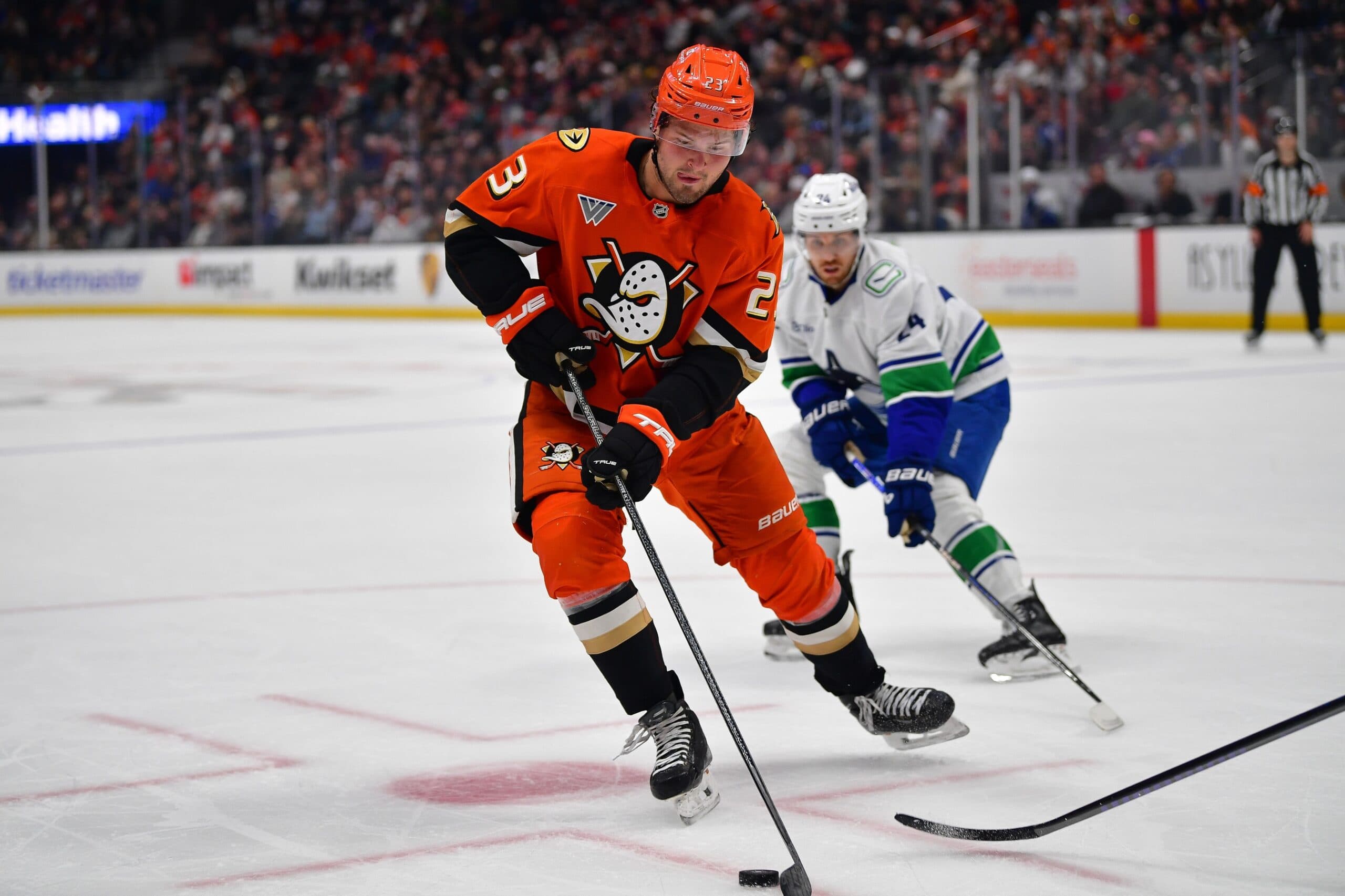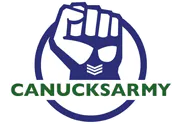Nation Sites
The Nation Network
CanucksArmy has no direct affiliation to the Vancouver Canucks, Canucks Sports & Entertainment, NHL, or NHLPA
Why making an offer sheet is a mostly unrealistic option for the Canucks this summer

Photo credit: © Gary A. Vasquez-Imagn Images
Mar 28, 2025, 14:30 EDTUpdated: Mar 28, 2025, 22:45 EDT
The Vancouver Canucks need a new top-six centre.
Now, needing something doesn’t always equate to getting it, and that’s as true for professional sports franchises as it is for us more common individuals. We all need lower mortgage payments and more tax rebates, too, but that doesn’t mean those things are going to become available. There are only so many top-six centres around, after all, and the vast majority of them already belong to other teams.
But when Patrik Allvin spoke on this issue recently, he spoke in declarative terms. Allvin told the press that, when it came to acquiring another ‘age-appropriate’ top-six centre, “Yeah, definitely we’ll do that in the offseason, whether that’s through trade or free-agent signing.”
Again, if we’re relating ourselves to the Canucks here, then we’ve all said we were “definitely” going to do something before and then wound up not doing it. But this statement does sure make it sound like Allvin has a plan or two in place, and that can’t help but lead to speculation as to what that plan might be.
We’ve already taken a good long look at the pending UFA market for this offseason and found it to be seriously lacking.
We’re talking a pool of Sam Bennett and…maybe just Sam Bennett. A few other names of intrigue might enter the picture, like Mikael Granlund or Ryan Donato or Jack Roslovic, but those are already less-than-ideal compromises on what the Canucks actually need.
Allvin also mentioned the possibility of making a trade, but there the Canucks will run into the problem of a lack of tradeable assets. Unless they’re willing to part ways with one of their small handful of truly high-quality prospects, it’s hard to imagine the Canucks putting together a package compelling enough to convince another team to part with a youngish top-six centre. In fact, it almost sounds like an impossibility.
So what else are the Canucks to do? One possible option that has been making the speculative rounds is that of an offer sheet. For the uninitiated, offer sheets occur when a team makes a pitch to another team’s unsigned player under ‘restricted free agent,’ or ‘RFA’, status. Not every RFA is eligible for an offer sheet – only those who have had their first NHL contract expire already and have accrued enough ‘years of professional experience,’ a measure that changes slightly based on the age at which a player signed their first contract. RFAs who have not met that threshold are not eligible for offer sheets.
The player in question also has to agree to the offer sheet. If accepted, the team holding the player’s rights has the ability to either match the offer sheets themselves or accept a pre-determined compensation package of draft picks, the amount of which are determined by the size of the contract itself.
The reason that the offer sheet option is getting a lot of attention in the Vancouver market is obvious: there are some intriguing young centres set to hit RFA status this summer. That list includes Mason McTavish in Anaheim, Marco Rossi in Minnesota, Ryan McLeod in Buffalo, Mavrik Bourque in Dallas, Morgan Geekie in Boston, and Morgan Frost in Calgary.
That’s probably the largest collection of supposedly-available quality centres one is going to find on the various markets around the league. It’s certainly more than is available via UFA, and these players, by their very nature, are certainly more age-appropriate for the Canucks.
But offer sheets are, by design, an option heavily constricted by limitations. And that’s especially true for the Canucks.
The thing is that offer sheet compensation is not open to any form of negotiation. The size of the contract offered determines the compensation package, and that compensation package must be derived from a team’s own draft picks in the next year’s draft. For this current set of RFAs, that means the picks must come from the 2026 NHL Entry Draft.
If a team does not have their own draft picks on hand to fulfill the required compensation package, they’re not even eligible to make the offer sheet. And that could be a problem for the Canucks, because the basic compensation structure looks like this:
AAV of offer sheet | $1 – $1,511,701 | $1,5111,701 – $2,290,457 | $2,290,457 – $4,580,917 | $4,580,917 – $6,871,374 | $6,871,374 – $9,161,834 | $9,161,834 – $11,452,294 | $11,452,294 or more |
Compensation | None | 3rd round pick | 2nd round pick | 1st round pick, 3rd round pick | 1st round pick, 2nd round pick, 3rd round pick | 2 1st round picks, 1 2nd round pick, 1 3rd round pick | 4 1st round picks |
(An important note: the ‘AAV’ of an offer sheet is always calculated by a maximum term of five years, even if the contract offered is for longer. So, if a team makes an offer sheet with a six or seven-year term, the ‘AAV’ is still the total amount of the contract divided by five.)
The AAVs listed here are for the 2024 offseason, and the thresholds will be higher for the 2025 offseason with the salary cap rising, but the basic compensation structure will remain the same.
Anyone who has been keeping track of the Canucks’ stable of draft picks will be able to see the problem right away. The Canucks traded away their 2026 third round pick already, sending it to Calgary last year as part of the package that returned Nikita Zadorov.
And without that specific pick, the Canucks are only eligible to make offer sheets in the bottom tier (no compensation), the third tier (compensation of one second round pick), or the top tier (compensation of four first round picks). That makes an already-limited tactic even more limited.
Remember, it has to be the Canucks’ own third, and it has to be in 2026. The Canucks can’t substitute a future pick, nor can they trade for someone else’s third rounder and use that instead. The only way for the Canucks to re-open their eligibility for the other offer sheet tiers would be for them to reacquire their own third rounder from Calgary.
For now, they’re stuck with the three tiers available to them. And, really, it’s one tier. Offer sheets at the ‘no compensation’ level literally never happen, and that wouldn’t really be the way to acquire a top-six centre, anyway, now would it?
As well, as exciting as some of those centre RFA names we listed earlier were, we can probably all agree that none of them are worth an average salary in excess of $11.5 million.
So, really, the Canucks are entirely limited to the “$2,290,457 – $4,580,917” or “one second round pick” tier. If we bust out our handy inflation calculator, we can estimate that with the cap ceiling going up about 8.5%, this compensation tier will also rise 8.5%, making the new range around “2,485,146- $4,970,294.”
And that would then be the challenge for Allvin and Co.: to find an RFA centre who is worth a contract in that range as far as the Canucks are concerned, but who would not be worth that same contract to the team currently holding their rights – or, more accurately, not worth that same contract plus the additional compensation of a second round pick.
And that might be the end of it. When we look again at that list of compelling RFA centres, we don’t see anyone whose current team would rather give up for a second-rounder than pay a sub-$5 million contract.
It certainly precludes the best players on the list: the McTavishes, the Rossis, the McLeods, and the Bourques.
Could it work for someone like Frost or Geekie? Perhaps. But then, neither of those players are definitive top-six centres yet, and the Canucks would need to be willing to give up both a second rounder and a contract that amounts to an overpay in order to land them.
So, as tempting as the idea of ‘stealing’ a young centre from another franchise via an offer sheet might be, it’s just not a very realistic outcome for this particular offseason. In future years, with a full array of draft picks available, it might become more realistic. But even then, offer sheets are rare occurrences and fraught with drama.
Chances are still best that the Canucks solve – or attempt to solve – their centre depth issues via unrestricted free agency or a more traditional trade.
Sponsored by bet365
Breaking News
- The Statsies: A big game from Aatu Räty helps Canucks overcome Wild
- Wagner’s Weekly: Is Canucks’ Jim Rutherford pulling off a stealth tank?
- Canucks assign Jonathan Lekkerimäki to AHL Abbotsford
- The Stanchies: Youth carries Canucks in weekend win vs. Wild
- Instant Reaction: Räty scores a pair, Willander pots first NHL goal in Canucks’ 4-2 win over Wild
